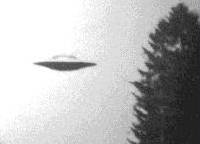Article/Document:
History of SETI
SETI Institute
original source | fair use notice
Summary: A brief history of the SETI project.
While interest in the question of extraterrestrial life is at least as old as historical civilizations, the modern SETI era can be defined as beginning in 1959. In that year, Cornell physicists Giuseppi Cocconi and Philip Morrison published an article in Nature in which they pointed out the potential for using microwave radio to communicate between the stars.
A young radio astronomer, Frank Drake, had independently reached the same conclusion, and in the spring of 1960 conducted the first microwave radio search for signals from other solar systems. For two months Drake aimed an 85-foot West Virginia antenna in the direction of two nearby Sun-like stars. His single-channel receiver was tuned to the "magic" frequency of the 21 cm (1,420 MHz) line of neutral hydrogen, a spot on the radio dial also favored by Cocconi and Morrison because of its astronomical significance. While he didn't detect any signal of extraterrestrial origin, Drake's Project Ozma spurred the interest of others in the astronomical community, most immediately the Russians.
In the 1960's, the Soviet Union dominated SETI, and it frequently adopted bold strategies. Rather than searching the vicinities of nearby stars, the Soviets used nearly-omnidirectional antennas to observe large chunks of sky, counting on the existence of at least a few very advanced civilizations capable of radiating enormous amounts of transmitter power.
At the beginning of the 1970's, NASA's Ames Research Center in Mountain View, California began to consider the technology required for an effective search. A team of outside experts, under the direction of Bernard Oliver, on leave from the Hewlett-Packard Corporation, produced a comprehensive study for NASA known as Project Cyclops. The Cyclops report provided an analysis of SETI science and technology issues that is the foundation upon which much subsequent work is based.
As the perception grew that SETI had a reasonable prospect for success, the Americans once again began to observe. During the 1970's, many radio astronomers conducted searches, using existing antennas and receivers. Some of the efforts, employing improved technology, have continued to the present time. Foremost among these are the Planetary Society's Project META, the University of California's SERENDIP project, and a long-standing observing program at Ohio State University.
By the late-1970's, SETI programs had been established at NASA's Ames Research Center and at the Jet Propulsion Laboratory (JPL) in Pasadena, California. These groups arrived at a dual-mode strategy for a large-scale SETI project. Ames would examine 1,000 Sun-like stars in a Targeted Search, capable of detecting weak or sporadic signals. JPL would systematically sweep all directions in a Sky Survey. In 1988, after a decade of study and preliminary design, NASA Headquarters formally adopted this strategy, and funded the program. Four years later, on the 500th anniversary of Columbus' arrival in the New World, the observations began. Within a year, Congress terminated funding.
With NASA no longer involved, both researchers and interested members of the public saw a diminished chance to answer, within their lifetimes, the profound question addressed by SETI. Consequently the SETI Institute is endeavoring to continue this large-scale program with private funding.
Project Phoenix will concentrate efforts on that component of the NASA SETI project known as the Targeted Search. Its strategy is to carefully examine the regions around 1,000 nearby Sun-like stars. The world's largest antennas will be used, and these have already committed observing time for SETI. By pursuing the search now, Phoenix can take advantage of an historical window of opportunity. Within a decade, radio interference from terrestrial sources will grow significantly, compromising our ability to detect weak signals.
Project Phoenix is orders of magnitude more comprehensive than any experiment yet performed. Frequently, the successful attainment of an elusive goal requires nothing less than a systematic and thorough effort. That is the philosophy behind, and the promise of, Project Phoenix.
Read more articles on this topic:






